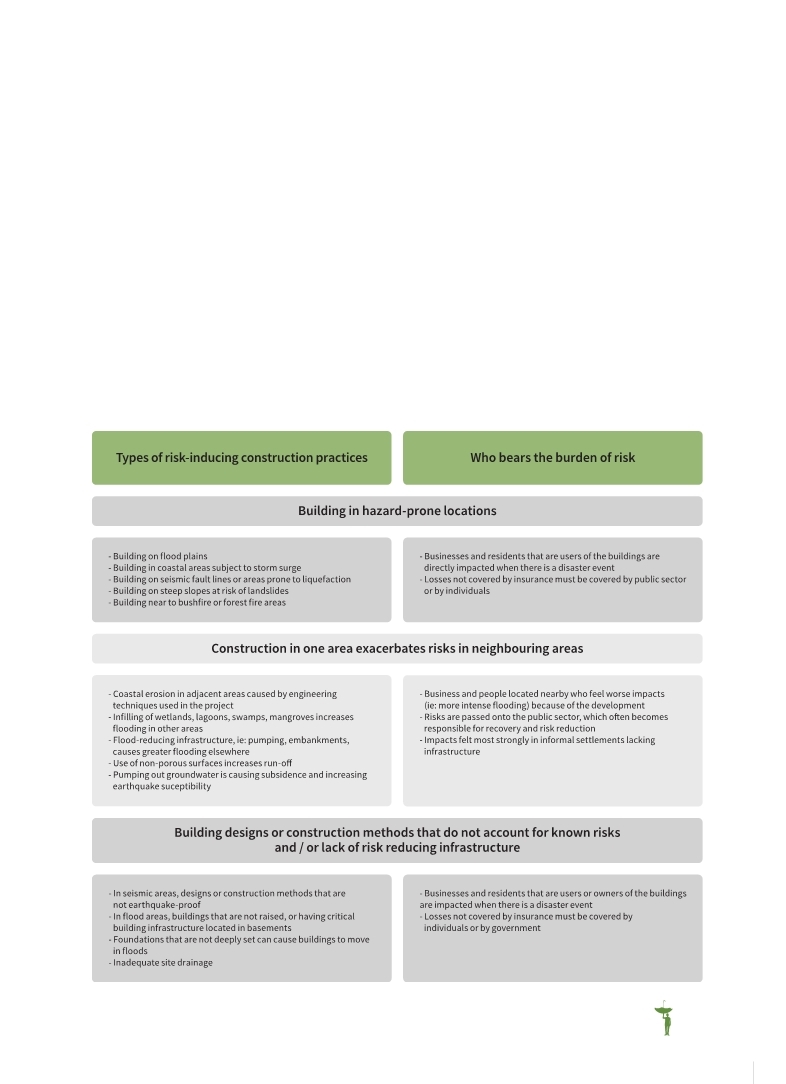 |
Global Assessment Report on Disaster Risk Reduction 2013
From Shared Risk to Shared Value: the Business Case for Disaster Risk Reduction |
 |
Global Assessment Report on Disaster Risk Reduction 2013
From Shared Risk to Shared Value: the Business Case for Disaster Risk Reduction |
|
|


|

Table 8.1 Types of risk-inducing construction practices and who bears the burden of risk
(Source:
 Johnson et al., 2012 Johnson et al., 2012 Johnson, C., Adelekan, I., Bosher, L., Jabeen, H., Kataria, S., Wijitbusaba, A. and Zerjav, B. 2012.,Private Sector Investment Decisions in Building and Construction: Increasing, Managing and Transferring Risks., Background Paper prepared for the 2013 Global Assessment Report on Disaster Risk Reduction., Geneva,Switzerland: UNISDR.. Johnson, C., Adelekan, I., Bosher, L., Jabeen, H., Kataria, S., Wijitbusaba, A. and Zerjav, B. 2012.,Private Sector Investment Decisions in Building and Construction: Increasing, Managing and Transferring Risks., Background Paper prepared for the 2013 Global Assessment Report on Disaster Risk Reduction., Geneva,Switzerland: UNISDR.. Click here to view this GAR paper. 125
design of a site); pre-construction (developing proposals, tender documentation and procurement); construction; and post-completion (including operation and maintenance).
Decisions to manage disaster risk may be taken during any of these different phases and reflect the interaction between stakeholders involved and factors that influence their actions. These factors include risk awareness; pricing of insurance; the existence and enforcement of risk-sensitive landuse plans or building codes; and public policies to promote growth and investment.
But ultimately, as in any other sector, trade-offs exist between the risks and costs and potential gains and profits. For example, as discussed in Chapter 2, even risk aware businesses may decide to invest in hazard-exposed areas with other comparative advantages, reflecting the imperative of economic growth and a conscious trade-off in which high levels of return on capital are considered sufficient to offset potential risks and losses.
In urban development, identifying these trade-offs is complicated for many reasons. Many intensive risks have long-return periods, meaning that for investors in urban development, the risks have low
|



 |
